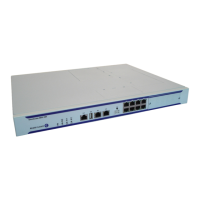Configuring a VLL Service with CLI
Page 168 7750 SR OS Services Guide
Configuring Epipe SAP Parameters
A default QoS policy is applied to each ingress and egress SAP. Additional QoS policies can be
configured in the
config>qos context. Filter policies are configured in the config>filter
context and explicitly applied to a SAP. There are no default filter policies.
Use the following CLI syntax to create:
• Local Epipe SAPs on page 168
• Distributed Epipe SAPs on page 170
Epipe SAP
CLI Syntax: config>service# epipe service-id [customer customer-id]
sap sap-id [endpoint endpoint-name]
sap sap-id [no-endpoint]
accounting-policy policy-id
collect-stats
description description-string
no shutdown
egress
filter {ip ip-filter-name|mac mac-filter-name}
qos sap-egress-policy-id
scheduler-policy scheduler-policy-name
ingress
filter {ip ip-filter-name|mac mac-filter-name}
match-qinq-dot1p {top|bottom}
qos sap-egress-policy-id
scheduler-policy scheduler-policy-name
Local Epipe SAPs
To configure a basic local Epipe service, enter the
sap sap-id command twice with different
port IDs in the same service configuration.
By default, QoS policy ID 1 is applied to ingress and egress service SAPS. Existing filter policies
or other existing QoS policies can be associated with service SAPs on ingress and egress ports.
An existing scheduler policy can be applied to ingress and egress SAPs to be used by the SAP
queues. The schedulers comprising the policy are created at the time the scheduler policy is
applied to the SAP. If any orphaned queues (queues with a non-existent local scheduler defined)
exist on a SAP and the policy application creates the required scheduler, the status on the queue
becomes non-orphaned at this time.
Ingress and Egress SAP parameters can be applied to local and distributed Epipe service SAPs.

